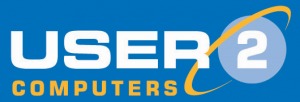Although Openview’s recent second report shows that most SaaS companies used usage-based pricing last year, many are now moving to hybrid models.
What Is Usage Based Pricing?
Usage-based pricing (UBP) is a pricing model where customers are charged based on how much they use a particular product or service. In the context of SaaS (Software as a Service), usage-based pricing means that the amount a customer pays for the service is, therefore, directly tied to how much they use it. For example, a SaaS company that offers an email marketing service may charge customers based on the number of emails they send each month, or a SaaS company that provides a project management tool may charge customers based on the number of active projects they have at any given time.
Types
There are many popular types of UBP, including pay-per-use, tiered pricing, subscription-based pricing, and freemium pricing, but the pricing model commonly used in industries such as software and SaaS, where businesses charge based on the number of employees or users accessing the product, is known as per-seat pricing.
61 Per Cent Used UBP Last Year
Openview’s second ‘The State of Usage Based Pricing’ report (published this month and based on a survey conducted among a diverse range of private SaaS companies in July-August 2022) shows that 61 per cent of SaaS companies used some form of UBP in 2022. The report also shows that another 21 per cent plan on testing UBP in the future.
Who?
Some examples of well-known tech companies shifting to UBP in recent times include Apigee, Google Cloud’s API management platform, and vertical software giant Autodesk. UBP is, however, used by many other big names including Slack, Mailchimp, Spotify, and many more.
What Are The Main Benefits Of UBP?
Some of the main benefits of UBP that explain why it’s been gaining in popularity in recent years include:
– It seems fair. UBP can be more fair than flat-rate pricing, as customers only pay for what they use. This ensures that customers who use less of a product or service pay less than those who use more.
– Cost-effectiveness. UBP can be cost-effective for both customers and businesses. Customers can save money by paying only for what they use, while businesses can reduce the amount of waste or excess inventory they have on hand.
– UBP is more flexible and allows customers to adjust their consumption based on their needs and budget. This can be particularly useful for customers who have fluctuating demand, such as those in seasonal businesses.
– Transparency. UBP is often more transparent than flat-rate pricing, as customers can easily see how their usage translates into costs. This can help build trust and loyalty between businesses and customers.
– It’s relatively simple to understand.
– It allows SaaS companies to share in their customers’ success, making it what could be called a Product-led growth (PLG) model, i.e. where product usage drives customer acquisition, retention, and expansion.
– It incentivises efficiency. UBP incentivises customers to be more efficient in their usage, as they will be directly rewarded for reducing their consumption. This can be particularly effective in industries where energy or resource conservation is a priority.
Why Charge On Usage Instead Of Users?
Some reasons why UBP has been preferred over pricing based on user numbers in recent years include:
– Seat pricing doesn’t scale with the value of automation. Software increasingly automates manual processes so the more successful a product is, the fewer user seats the customer needs.
– With the rise of AI gradually eliminating the need for whole teams of people for ongoing tasks, it’s become more difficult to achieve Monetisation that’s tied to human users of a product.
– For many fast-growing software companies, the value is in the API, i.e. software talking directly to software, so there doesn’t need to be a user to see value.
– Value-based pricing. UBP aligns with the value that the software provides to the customer. If a customer is using the software frequently, then they will pay more, while a customer who uses it less will pay less. This model can create a stronger connection between the value the software provides and what the customer is paying for it.
– Customer acquisition. By using UBP, SaaS companies can attract and retain customers who might be hesitant to commit to a fixed per-user fee. This pricing model can be more attractive to customers who are new to a particular software solution or are just testing the waters. UBP can also help companies to acquire and retain customers who have variable usage patterns.
– Competitive advantage. Offering UBP can give SaaS companies a competitive advantage over their competitors. By providing flexible and cost-effective pricing, SaaS companies can differentiate themselves from their competitors and attract more customers.
– Improved customer retention. UBP can lead to higher customer retention rates since customers are only paying for what they use. If customers feel they are getting value from the software and the pricing is fair, they are more likely to stay with the company over the long term.
Changing – A Move Towards Hybrid Pricing
In addition to showing how popular UBP still is, the report also highlights the fact that today’s SaaS companies are now turning to more complex, hybrid pricing models, and that usage-based models exist somewhere in the middle of a pricing method spectrum.
Figures show that it’s not simply a case of usage-based pricing or subscriptions and that the share of companies with a largely usage-based or pay-as-you-go model has declined year-over-year (22 per cent to 15 per cent).
The report makes the point that hybrid pricing models appear to be more effective in today’s uncertain market conditions, e.g. mass tech layoffs and the rise and fall of company valuations and can help companies win deals and meet customers where they are.
The future of SaaS pricing, therefore, appears likely to continue being more blurred, with companies using blended models, e.g. Zapier, offering subscription tiers that include consumption as one of its main variables.
Stacking
One of the other SaaS pricing features noted by the report was that new stacks of products are being introduced by SaaS companies to help them offer more complex pricing and as a way of experimenting with (and changing) their pricing.
What Does This Mean For Your Business?
Broadly speaking, although UBP for SaaS companies is still on the way up, recent uncertain market conditions have seen many SaaS companies moving to hybrid models. Combining elements of different pricing models and creating new stacks of products have helped SaaS companies to take advantage of more complex pricing and have made them better able to weather the current economic challenges. It appears, therefore, that although UBP has many advantages and is still popular, the future is more blurred, hybrid pricing and UBP will exist in the centre of a spectrum of pricing model mixes rather than replacing other pricing models.




